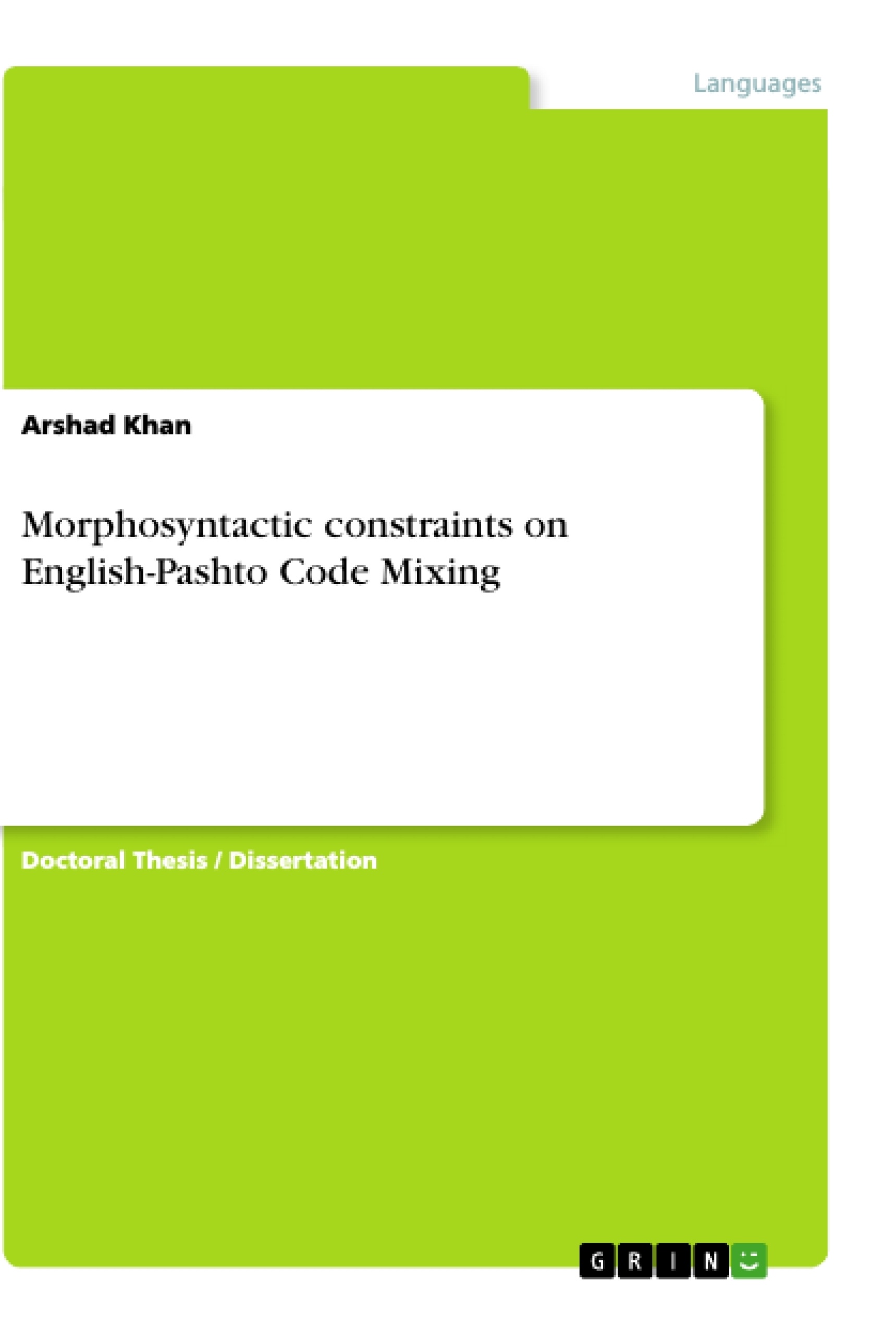This study examines the morphosyntactic constraints on Pashto-English code mixing. The framework for the present research is based on the widely attested code-switching model, the Matrix language Frame Model augmented by 4-M model. The present study supports the asymmetrical structure approach to the Pashto-English bilingual data for the morphosyntactic constraints. In order to investigate four research questions, 25 clips of Pashto speech community have been transcribed and analyzed.
In the core research question for the morphosyntactic constraints, the study is based on MLF model augmented by 4-M model. It has been found that Pashto is the language responsible for the morphosyntactic frame and is the matrix language while English is the embedding language. The second research question for the pattern of code mixing is based on Muysken (2000) typology of code mixing where it has been found that the pattern of insertion is the dominant pattern of code mixing. The third research question shows that in the bilingual compound verb, the light verb construction is highly innovative and an emerging category in the Pashto-English bilingual data. The fourth research question shows that Pashto-English code mixing is used as a device of indigenization of English loanwords in the Pashto language of Khyber Pakhtunkhwa.
Inhaltsverzeichnis (Table of Contents)
- Abstract
- Introduction
- Literature Review
- Theoretical Framework
- Methodology
- Data Analysis
- Findings and Discussion
- Conclusion
- References
Zielsetzung und Themenschwerpunkte (Objectives and Key Themes)
This dissertation aims to explore the morphosyntactic constraints that govern code-mixing in English-Pashto bilingual speech. It seeks to understand how speakers of both languages navigate the complexities of language mixing, focusing on the grammatical rules and structures that guide this process.
- Morphosyntactic Constraints in Code Mixing
- Language Contact and Bilingualism
- English-Pashto Code Mixing Patterns
- Grammatical Rules and Structures
- Sociolinguistic Factors Influencing Code Mixing
Zusammenfassung der Kapitel (Chapter Summaries)
- Abstract: This chapter presents a brief overview of the research topic, its significance, and the key findings of the dissertation.
- Introduction: This chapter introduces the concept of code mixing and provides a detailed background of the research problem. It outlines the objectives and research questions that guide the investigation.
- Literature Review: This chapter examines the relevant literature on code mixing, bilingualism, and morphosyntactic constraints. It provides a critical analysis of previous studies and theories related to the topic.
- Theoretical Framework: This chapter discusses the theoretical framework adopted for the study. It outlines the key theories and models that inform the analysis of code mixing data.
- Methodology: This chapter describes the research methodology employed in the study, including the data collection methods, sample selection, and data analysis procedures.
- Data Analysis: This chapter presents a detailed analysis of the collected code-mixing data, focusing on the morphosyntactic constraints identified in the speech samples.
- Findings and Discussion: This chapter discusses the findings of the study and interprets the results in light of the theoretical framework and previous research. It provides a detailed discussion of the morphosyntactic constraints governing English-Pashto code mixing.
Schlüsselwörter (Keywords)
This dissertation explores the multifaceted field of code-mixing, focusing on the morphosyntactic constraints governing English-Pashto bilingual speech. Key terms include code mixing, bilingualism, language contact, morphosyntactic constraints, grammatical rules, linguistic structures, sociolinguistic factors, and empirical data analysis. These keywords represent the core concepts and theoretical frameworks that guide the investigation, revealing valuable insights into the complexities of language mixing and bilingual communication.
- Quote paper
- Arshad Khan (Author), 2014, Morphosyntactic constraints on English-Pashto Code Mixing, Munich, GRIN Verlag, https://www.grin.com/document/1161339



